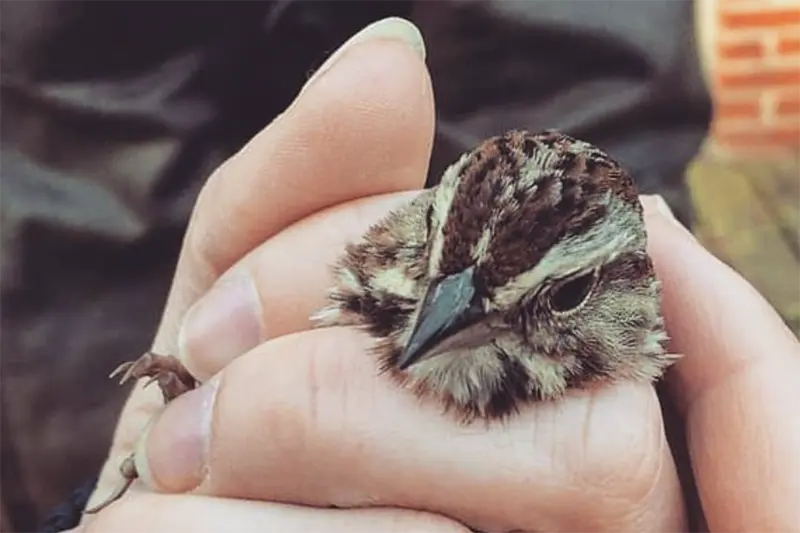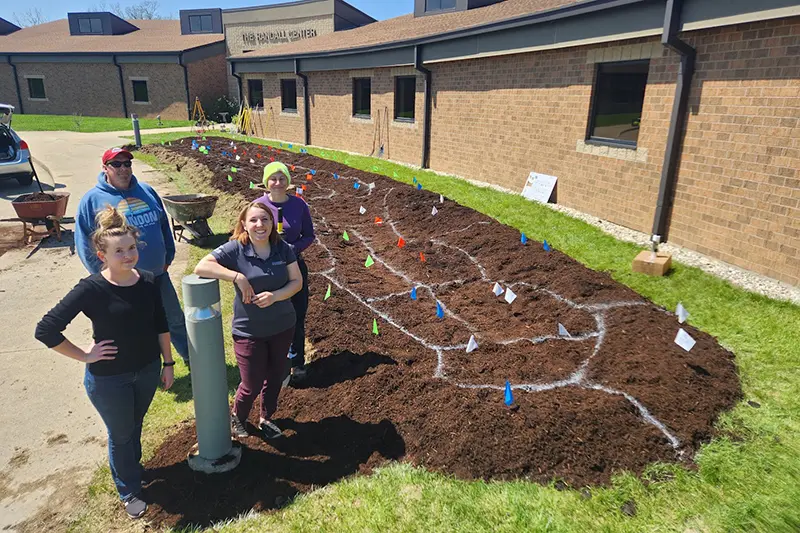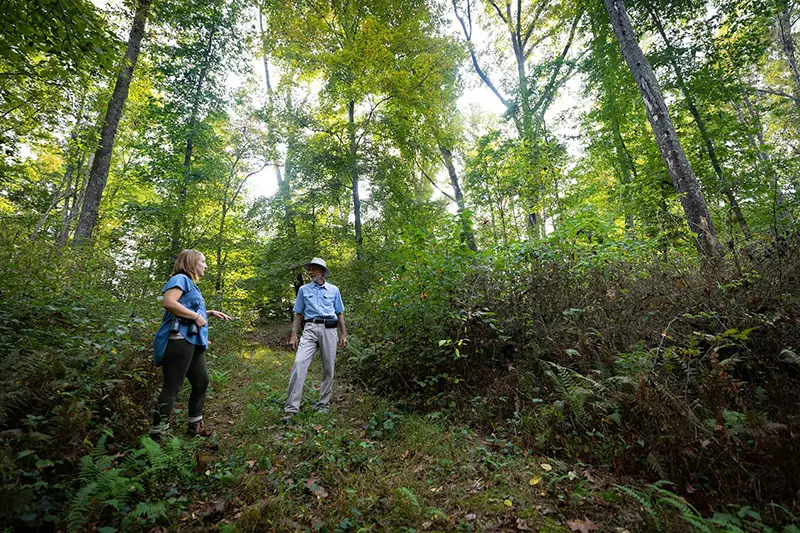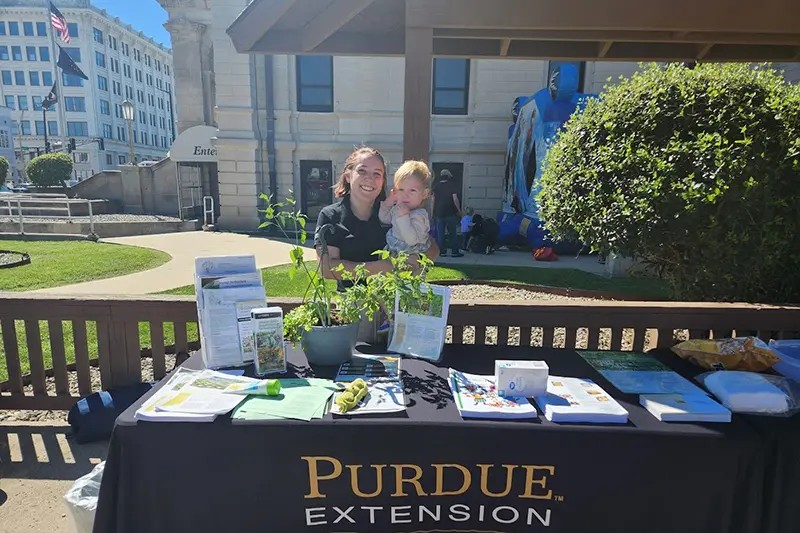Dr. Jessica Outcalt, PhD, graduated with honors from Taylor University with a BS in Biology. Now, she is an Agriculture, Natural Resources, and Community Development Educator with Purdue Extension–Cass County. During her young career, she has already researched, studied, and educated in fields spanning from bird migration to agronomy, the study of soil management and crop production. During a recent seminar at Taylor, she shared her career experiences.
Wrestling with Faith in a Safe Space
When Outcalt first visited Taylor in high school, she was greeted with a life-changing environment.
“When I was visiting colleges, what stood out to me about Taylor was that the faith of the people here seemed genuine,” Outcalt said. “It didn't seem like the faith I grew up with where it was just, ‘You go to church on Sunday mornings and you're going through the motions.’ It was genuine here. So that's what attracted me to Taylor, and over my four years here, that really became true.”
Throughout her time at Taylor, Outcalt found that faculty were committed to leading students to explore the ethical reasoning behind a faith-based pursuit of science and sustainability. Although she thought she had a strong understanding of theology and science, her theology and biology classes made her reassess that assumption.
“I was challenged by those discussions that happen in a safe space here at Taylor, to wrestle with those big questions, to work through them,” Outcalt said.
Learning Outside the Classroom
Outcalt put her education into practice during the J-term of her freshman year. During a trip to the Bahamas with the Honors Guild, she took a course on small island sustainability. There, she learned that she might want sustainability to be part of her career.
Later, Outcalt took a Natural History course in the Black Hills of South Dakota, she gained experience through observing prairie dogs and other fieldwork opportunities. This class had a heavy impact on her career trajectory.
“I distinctly remember sitting out in South Dakota watching prairie dogs,” Outcalt said. “Dr. Jan Reber had me take observations on behaviors. I just remember thinking, ‘If I could sit here and do this for the rest of my career, that would be fantastic.’ That’s how I got interested in wildlife. I would never have gotten exposed to it otherwise.”
A later class with Reber gave Outcalt experience with bird banding, the practice of placing a tag on wild birds for conservation research.

“I got to hold a wild bird in my hand and I just spent the next four years pursuing a PhD in birds,” Outcalt said. “It's those little things that can just really spark my interest and send me down career-long rabbit holes.”
Stewarding Creation
Outcalt was captivated by the beauty of God’s creation when she was young, and now, she can see that in that beauty there is brokenness. She sees it as our calling to be stewards who care for the beauty we’ve been given, and this has been the driving force of her career.
Bird populations have been decreasing in the Midwest since the 1990s, which is having negative ripple effects in other areas of the ecosystem. When Outcalt pursued her doctorate at Purdue, she focused her work on learning what habitats migratory birds in Indiana used, which led to her dissertation: “Stopover Ecology of Migrating Birds in Indiana.”
She found that many birds use small shrubbery that grows in clearings and young forests as habitats, and she wanted to locate where the conservation of those environments is most needed. Conservation spending was limited in Indiana, and the challenge was to figure out which conservation location was the best possible choice for these birds.
At first, she struggled to find a way to locate these environments, but she eventually found her answer: weather radar. She was able to identify the density of birds in flight during the night and when they migrate. Since the radar has been archived for decades, she was able to see how the patterns of density shifted over time.
After this fruitful study, she moved on to work with Western Ecosystems Technology Inc. as a field technician who monitored the pre- and post-construction biodiversity around wind energy facilities. During this time, she also worked with The Nature Conservancy to educate landowners on ways they can make their outdoor areas more bird-friendly through pamphlets and a short documentary.
Outcalt now works as an educator with Purdue Extension, where she brings university research on agriculture, the environment, and community health to a specific county and teaches the public in a symbiotic relationship between Purdue University and Indiana residents.

Her impact can also be seen on Taylor’s campus in a rain garden, a garden built lower than its surroundings in order to attract excess rainwater, that she helped install in front of Randall Environmental Center. She also teaches General Biology as an adjunct professor at Taylor.
A Starting Point for Young Natural Scientists
Taylor’s Environmental Science and Sustainable Development Program and the Biology Program both offer field experience in conservation, animal observation, and more. Taylor’s 145-acre arboretum houses multiple ecosystems and the Avis Prairie serves as an area for ecological restoration where students study subjects from soil development to plant diversity.
Want to see these resources for yourself? Schedule a visit or apply today!

All photos courtesy of Jessica Outcalt




